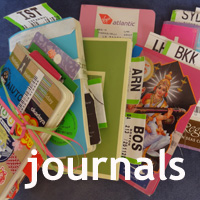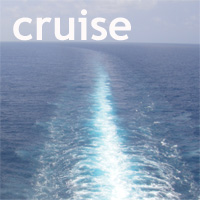We woke up in Lithuania
 Thursday, September 15, 2016 at 1:37PM
Thursday, September 15, 2016 at 1:37PM
And as we have never been here before, it warranted a loud “ker-ching” when we stepped on dry land!
I poked my nose out first thing this morning and was glad to see what looked to be another lovely day outside.
I soon stepped back in though, because it appeared we were being observed!
We went out to join our tour group after breakfast and found there was a delightful welcome party to greet us. It’s always lovely to arrive somewhere new to a musical accompaniment: this group were playing tuneful Lithuanian folk songs.
We drove out of the port area and the first thing to be pointed out was the old castle mound – no castle left now, but it seems a new one is planned and who knows what we might see there in a few years time?
We’re actually in Klaipeda – or were, until we drove out through the suburbs and into the countryside.
We were heading for Palanga, a small old town not far from here but with one clear difference. Palanga had always been Lithuanian, whereas since the 15th century, Klaipeda (Memel) and the surrounding countryside had been part of Prussia (and subsequently Germany, of course). Asta, our lovely guide told us stories of that time and of life under Russian administration, when life here had been very tough indeed. The rich and varied history of this area is a lot to take in, though my Hero and the family historian back in England enjoyed a text conversation as we drove along.
Shortly, we arrived at the park gates in Palanga. The Palace had been built in this lovely parkland by Count Feliksas Tiskevicius and his wife with their family of ten children. Sadly, their home had been taken over during the war and they all had to flee to safety, but now, it is publicly owned and operates as a museum and public park.
Just inside the gates was a sign, but as we don’t speak Lithuanian, we had no idea it was announcing an open air exhibition of communication-related plant installations. As we walked towards the palace, we came across them one by one and soon worked it out.
Little groups of mailboxes caught our eye to begin with.
I thought them pretty neat and really well maintained. Asta said she thought the greenery was refreshed every so often which would explain how they looked so fresh.
A little further along was the postman’s bicycle and another mailbox. It was just about 9am by now, so the shadows were very dark – sorry about that.
The last one before we entered the palace gardens was this “quill pen”, very cleverly imagined, I think, with an ink pot and sheet of paper alongside, too.
From here, the palace looked splendid and the gardens surrounding it were at their best in the sunshine.
Everything was spick and span and taking Asta’s advice to walk straight past the “witch’s house” without stopping, for fear of what might become of us, we headed straight up the steps and into the palace.
Here’s Asta, dressed as the Countess, to whom she was related in some way. She was a great guide!
Whilst waiting for someone, I spotted this charming ?weathervane? in the ticket office. I have no idea what it’s made of nor if it has any use whatsoever. I just love things like this and had to take a picture of it.
At the top of the first flight of stairs we entered a small reception area and on the wall were portraits of the Count and Countess. Several were interested to know what became of them and Asta did her best to explain.
She told us that the Countess loved roses and suggested we look out for them around the house. I spotted only this one and one other,
although the family rooms overlooked the semi-circular rose garden, which she enjoyed too, we were told.
The Count’s study was the room of a young man, with his desk facing the window out onto the garden, too.
It was attractively staged, with an open book and map (battle plan?) left open on his desk. From here, we went though to the staircase and climbed to the next floor, where there is now an Amber Museum.
Here was a wealth of information about Amber, one of the key local products and the foundation for many myths and legends of the region.
It was really well displayed with magnifiers and lights to enable us to see the trapped insects and other such phenomena. But as Asta advised, any yellow piece with a scorpion inside is definitely plastic!
There were other displays of historic amber, mostly found in tombs having been buried with the owner. Women were buried with useful things too, such as amber spinning whorls. This area is also known for fine linen and I imagine spinning was a common occupation.
How interesting that the women were buried with the tools and useful things whilst the men got the jewellery, hair combs and suchlike!
We exited through what Asta called “the trap” – the giftshop – though it was interesting to see some of the jewellery made with black metal, rather like the iron designs we’d seen in Schwerin. I don’t know what metal this was and didn’t really want to get into conversation about something I wasn’t going to buy.
It was time to head out through the Countess’ rose garden and back to the park entrance, spotting some of the installations we missed on the way in.
I guess pencils are a pretty effective means of communication
but we are in the 21st century and perhaps SMS is quicker?
There were envelopes with interesting contents.
and finally, a cute little mossy postbox I’d spotted on the way in but failed to capture with my camera. Can you see the birds (messenger pigeons?) in the tree?
Having see the palace and the park, we drove a short distance to the old town of Palanga, which turned out to be nothing like as interesting as we’d hoped.
Asta had told us it’s a resort town and on this Thursday morning, it looked pretty deserted.
We took a short look in the (catholic) church before taking a stroll along the “main street”.
Lined with restaurants (closed) and souvenir shops, it wasn’t really the kind of place to detain us long.
Though I did take a picture of a lovely picture.
I also took a picture of written Lithuanian, which we were told (and which you surely knew already) is one of the oldest languages in the world and is most closely related to sanskrit.
As we returned to meet our group, I noticed that, had we headed in the opposite direction, we might have come across something a little more interesting. Never mind.
We returned to Klaipeda, where a cold beer awaited us. Sveikatą!
Thereafter, a quick zoom around town with Asta, who told stories of the great fire, which hit this row of wooden warehouses badly.
This river had been so crammed with ships, she told us that you could cross it by stepping from one ship to the next, and that as the city burned, people came and sat here, by the water and cried. One of those people was said to be Heinrich Schielmann who went on to discover the treasures of Troy.
A little further along, we came upon the cat. “This is a cat for men”, she said. I’ll leave it to your imagination what is promised if you rub the cat’s tail and won’t say whether I encouraged my Hero to give it a try or told him there was no need
The streets here are all named after the businesses which are to be found there. So, I know the cat is in Shoemaker’s street, but have no idea what these two signs mean.
Around the corner is the stature for ladies – the mouse, who listens to our wishes and grants them. Well, yes, of course I gave it a go! It’s not every day that opportunity comes along.
Back into Theatre Square we went then, where a monument to the German poet Simon Dach had a statue of his lost love (who happened to be his best friend’s wife). hmm.
And that, was that for Klaipeda. Pretty nice all round and as we said to Asta, we knew nothing of her country until today and how pleased we were to be here in her company.
She pointed out the statue of the small boy waving goodbye, but he was already attracting a great deal of attention, so we thanked her and came inside.
She gave us each a card and a small souvenir of Klaipeda in the form of a bag of amber chips. She had told us how these can be soaked in alcohol and a teaspoonful of the resulting elixir will work wonders of any ailment. Now we have the magic ingredient, maybe we’ll give it a try.
What a great day!
 Gill Thomas |
Gill Thomas |  1 Comment |
1 Comment |  Lithuania in
Lithuania in  cruise,
cruise,  fun,
fun,  travelling
travelling 






